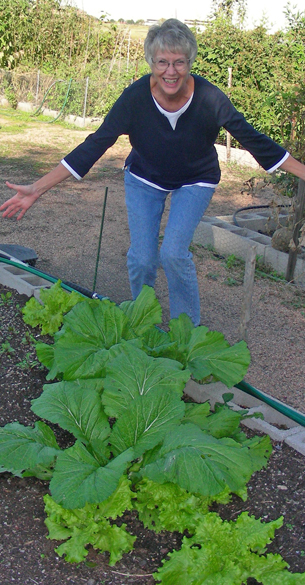It’s not often that I dislike seeing a new pesticide label. Not that I like insecticides per se (they are tools for pest control), but in recent years new insecticides have generally represented products that produced either better or safer control of pests. The active ingredient, imidacloprid, in the new Bayer Advanced™ Fruit, Citrus and Vegetable Insect Control is not new, but the label is. The recent label amendment permits imidacloprid use by homeowners on fruit and nut trees, citrus, herbs and vegetables.
Imidacloprid is a systemic insecticide, which means that it is water soluble enough to be picked up by plant roots and translocated throughout the plant via the vascular (sap) system. This is not true of most insecticides, which tend to have very low water solubility and mostly stay where they are put. But systemic action can be a good thing, making application easier (especially on big plants, like trees) and even safer for beneficials (no residues on leaves to harm predators and parasites). I believe imidacloprid is one of the better products we use for safely controlling white grubs, aphids and other sap-feeding insects on ornamental plants.
The use of imidacloprid for commercial vegetable production is not new. Years ago the manufacturer of imidacloprid had to do a lot of homework to get a vegetable label. Any pesticide manufacturer who wants to label one of their products for use on food crops has a very rigorous set of standards that must be passed. First the government has to issue a tolerance–that is a level of the pesticide that it deems is safe for human consumption. These tolerances are carefully vetted by toxicological research. Then research must be done to find out how long a grower must wait after application before the pesticide has degraded to that safe, tolerance level. This is called a pre-harvest interval. When you read on a pesticide label that you should wait 3 days until harvest, that’s the pre-harvest interval. This interval is designed to make sure you are not eating dangerously high levels of pesticides.
I’ve always told Master Gardeners, and others who asked, that systemic insecticides are generally not labeled for edible crops because they can persist in plant tissues. This persistence has been noted repeatedly for imidacloprid by researchers, with insect control persisting up to a year or more on some woody plants. Presumably the persistence of imidacloprid in vegetables is shorter, and the levels of product remaining at harvest low enough to pose any human health risks. The new Bayer label has a pre-harvest interval of 14-21 days. The label also specifies that no more than one application should be made per year. These sorts of restrictions on a product are required by EPA to ensure that levels remaining on the plants are below acceptable residue tolerances.
My dislike of the new label is not necessarily because I distrust the science. The EPA generally does a good job reviewing toxicology data and environmental fate data. I am concerned, however, that homeowners are less likely to read and follow the small print on a label than a commercial grower with pesticide applicator training.
In my experience, home gardeners tend to be more emotionally sensitive to pesticide use in their own garden, even if they don’t always buy their veggies from the organic produce section at the store. This comes, it seems to me, from an expectation that food from our own gardens should be purer and more wholesome that store-bought foods. I know this is the way I feel about my garden.
I am reluctant to water imidacloprid into my veggies when insecticidal soap or oil might be just as good and less risky. My personal list of acceptable insecticides in the veggie garden includes soap and oil, spinosad and Bt products, hard streams of water, and maybe even an occasional use of a spot application of a pyrethroid insecticide on tough pests like squash bug. But even though my brain says trust the science, my heart says leave the systemic products for lawns, trees and shrubs. If you choose to do otherwise, be sure to follow the pre-harvest interval.
